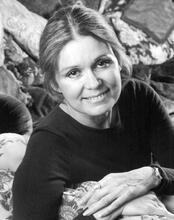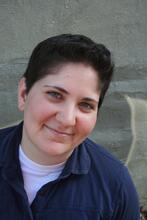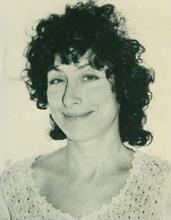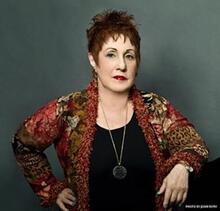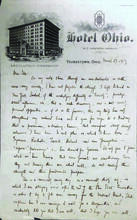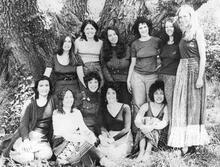Shulamith Firestone
Shulamith Firestone was born in Ottawa, Canada, and grew up in St. Louis, MO. In rejecting the restrictions of her family’s Orthodox Judaism, she became alienated from her parents and most of her siblings. After receiving a BA from Washington University in St. Louis and a BFA from the Art Institute of Chicago, she moved to New York City. There she founded some of the first—and foremost—radical feminist organizations in the United States. In 1970, at the age of 25, she published The Dialectic of Sex, which argued that “family structure is the source of psychological, economic and political oppression”; The Dialectic of Sex was one of the most widely discussed books of the second wave feminist movement. She was diagnosed with schizophrenia some years later and became increasingly isolated.
Shulamith Firestone’s The Dialectic of Sex: The Case for Feminist Revolution (1970), one of the most widely discussed books of the second wave feminist movement in the United States, argued that “family structure is the source of psychological, economic and political oppression.” Firestone, a founder of radical feminism, brought together the dialectical materialism of Marx and the psychoanalytic insights of Freud in an effort to develop an analysis of women’s oppression that was inclusive of the dimensions of class and race. Although she wrote for a popular audience, her work was broadly grounded in classic texts and raised many questions that have since been taken up and developed by feminist theorists within the academy.
Family and Education
Shulamith Firestone, the second of six children (Daniel, Ezra, Laya, Miriam Tirzah, and Nehemia) in the Orthodox family of Saul and Kate (Weiss) Firestone, was born in Ottawa, Ontario, on January 13, 1945. She grew up in St. Louis, where, during her teen years, she worked as an organizer with the St. Louis Congress on Racial Equality. She attended Yavneh of Telshe Yeshivah near Cleveland. From 1961 to 1963, she attended Washington University in St. Louis, studying English and History. She then transferred, on full scholarship, to the Art Institute of Chicago, from which she received a BFA. in painting in 1967. Her rebellion against the religious strictures of her family (in particular, her father) left her largely alienated from many of its members.
Activism: Civil Rights, Anti-War, and Feminism
In Chicago, Firestone was active in the civil rights and anti-war movements. Over Labor Day Weekend in 1967, she attended the National Conference for a New Politics held in Chicago. Along with other feminists, she noticed that the question of women’s secondary status in society had been left completely off the agenda. Together with Jo Freeman, she drafted a resolution attempting to call attention to these issues. They were ignored and laughed off the floor. This treatment led them to establish the Westside Group, the first independent women’s caucus organized around women’s issues since the suffrage era. (The group later became the Chicago Women’s Liberation Union.)
In 1967, four male graduate students at Northwestern University produced a documentary about her, entitled “Shulie,” profiling her work and life as an art student and aspiring painter. That film later became the basis for an independent film by Elisabeth Subrin, also titled “Shulie” and released in 1997, in which shots and dialogue were taken directly from the earlier documentary, but Firestone was portrayed by an actress. Firestone did not participate in the making of the second film. Although she seems to have left off painting in the late 1960s when she became more deeply involved in feminist activism, she took it up again later in her life.
After she moved to New York late in 1967, Firestone co-founded three of the most iconic feminist organizations in New York City, setting the agenda for radical feminism across the United States: New York Radical Women (the first women’s liberation group in New York), Redstockings, and New York Radical Feminists. She served as editor of Notes from the First Year (1968), Notes from the Second Year (1970), and, with Anne Koedt, Notes from the Third Year (1971), each presenting writings by significant thinkers and activists within the broader feminist community. In March 1969, she organized the nation’s first abortion speak-out at Judson Memorial Church in Greenwich Village, at which about a dozen women spoke publicly for the first time about their experiences with abortion. They received a respectful hearing from the assembled audience of both men and women.
The radical feminist groups she founded, however, proved to be laden with conflict. In an article in Ms. magazine in 1976, Jo Freeman labeled the tensions within many feminist groups as “trashing: a particularly vicious form of character assassination.” Often attacks were directed at those who had been highlighted by the media. Many such women in leadership positions were accused of anti-feminist behavior and effectively forced out of their activism. Firestone felt overwhelmed by the pressures of this sort of attention—both positive and negative—directed at her, particularly after the publication of The Dialectic of Sex. Shortly after its publication, she retreated to a relatively solitary life of painting and writing.
In later years, after a diagnosis of schizophrenia, Firestone spent time in and out of mental hospitals. In 1998, she published Airless Spaces, a series of short stories based on her experiences with mental illness and hospitalization. During her last decades, she became increasingly isolated, ultimately rejecting the efforts of friends, family, and colleagues to be of support. She died, alone, in her apartment in Manhattan, in August 2012.
Firestone’s Analysis and Feminist Theory
While taking much from Marx and Freud, Firestone insisted that they had not carried their analyses far enough. Marx and Engels had failed to recognize that what she called “sex-class”—the domination of men over women rooted in a kind of biological determinism—both provided the model for and offered additional support to domination by economic class as well as by race. She argued that both Freud and feminism responded to some of the same cultural forces—“grew from the same soil”—but that feminism recognized and challenged the social-structural context of syndromes Freud’s theories tended to treat as solely intrapsychic. Freud had argued that sexual repression was essential to the survival of the (male-dominated, patriarchal) family, and to the “civilization” based upon it. Firestone extended that argument to explore the centrality of patriarchy and repression to environmental degradation, capitalism, and racism, as well as to sexism. Neither a socialism that ignored gender subordination nor a feminism that refused to challenge the basic infrastructure of society would be sufficient on its own. She insisted that the true emancipation of women (and, therefore, of everyone) would require both an end to sexual repression and the emancipation of children.
Only in the last quarter of the twentieth century, Firestone argued, had “material conditions” progressed to such a point that a truly revolutionary feminism was possible. In her opinion, pregnancy and childbirth were “barbaric.” The development of contraception, the possibility of creating “test-tube babies,” and other scientific advancements meant that humanity would soon have the technological means to separate pregnancy and child rearing from sex and, ultimately, free women from childbearing. Only a destruction of the nuclear family, and the consequent elimination of pressures on women (and men) to marry and have children, would make possible the creation of new, more rational, and voluntarily constituted groups of people committed to raising children in ways that would not require either permanent male-female bonding or the identification of two particular adults with “their” particular children. The methodology she developed—exploring connections among racism, sexism, homophobia, capitalism, and so on—suggested what Kimberlé Crenshaw (in “Demarginalizing the Intersection of Race and Sex: A Black Feminist Critique of Antidiscrimination Doctrine, Feminist Theory and Antiracist Politics,” University of Chicago Legal Forum [1989]) was later to term “intersectionality.” The “utopian” vision she articulated has many similarities to a communalist anarchism.
Firestone’s efforts to salvage Marx and Freud were the first of a series of feminist efforts to use these theorists and their methods to understand the subordination of women and to articulate strategies to overcome it. Yet her insistence that the subordination of women was fundamentally linked to the oppression of children is an insight that has not been taken up as ardently by later feminists. What is perhaps most striking to twenty-first-century readers is Firestone’s extraordinary faith in technology, and her belief that a truly revolutionary ecology would “attempt to establish an artificial (man-made) balance in place of the ‘natural’ one, thus realizing the original goal of empirical science: total mastery over nature” (The Dialectic of Sex, p. 219). Only the overcoming of the ultimate biological difference between men and women would allow for true emancipation of all.
Selected Works
The Dialectic of Sex: The Case for Feminist Revolution. London: Woman’s Press, 1970.
Notes from the First Year (editor). New York: New York Radical Women, 1968.
Notes from the Second Year (editor). New York: Women’s Liberation Movement, 1970.
Notes from the Third Year (editor, with Anne Koedt). New York: 1971.
Airless Spaces. New York: Semiotext, 1998.
Faludi, Susan. “Death of a Revolutionary.” New Yorker, April 15, 2013.
Fox, Margalit. “Shulamith Firestone, Feminist Writer, Dies at 67.” New York Times, August 30, 2012.
Gorman, Robert A., ed. Biographical Dictionary of Neo-Marxism. Westport, CT: Greenwood Press, 1985.
Love, Barbara J., ed. Feminists Who Changed America (1963-1975). Urbana, IL: University of Illinois Press, 2006.
Ireland, Norma Olin. Index to Women of the World from Ancient to Modern Times: A Supplement. London: The Scarecrow Press, 1988.
O’Neill, Lois Decker, ed. The Women’s Book of World Records and Achievements. New York: Da Capo Press, 1979.
Uglow, Jennifer S. and Frances Hinton, comp. and ed. The Continuum Dictionary of Women’s Biography. New York: Continuum, 1989.
Uglow, Jennifer S. and Frances Hinton, comp. and ed. The International Dictionary of Women’s Biography. New York: Continuum, 1982.
Mankiller, Wilma, et al, eds. The Reader’s Companion to U.S. Women’s History. New York: Houghton Mifflin Harcourt, 1998.

